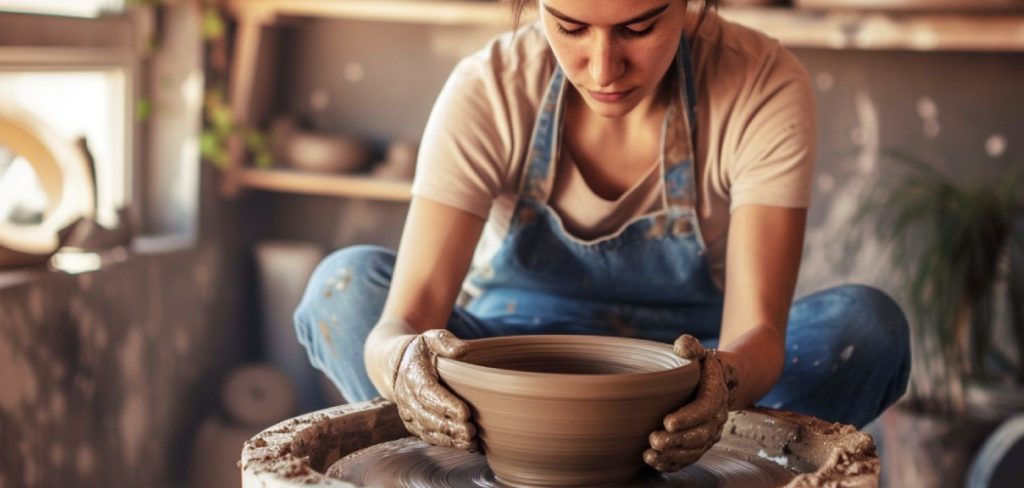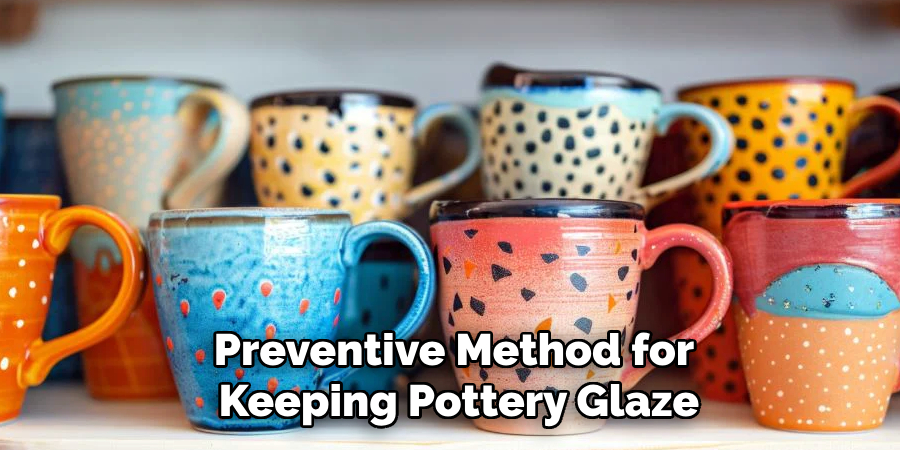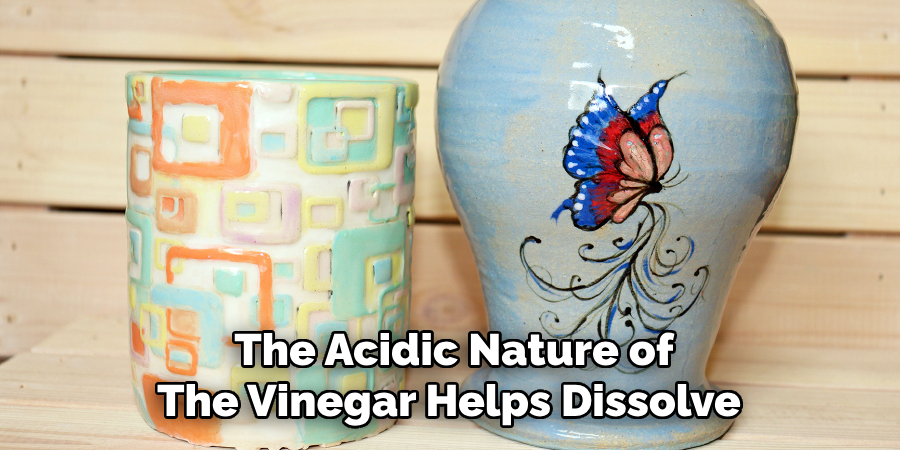Cleaning pottery glaze is an essential step in maintaining the beauty and longevity of your ceramic pieces. Whether you’re working with a freshly glazed item or restoring an older piece, proper cleaning techniques can help preserve the glaze’s finish and ensure it remains vibrant. This guide will walk you through the steps of how to clean pottery glaze effectively without causing any damage.

Understanding Pottery Glaze and Its Purpose
Pottery glaze serves both functional and aesthetic purposes in ceramics. Functionally, glaze creates a protective coating over the clay surface, making the piece water-resistant, durable, and easier to clean. It also helps to seal the pottery, preventing liquids from seeping into the porous material. Aesthetically, glazes add color, texture, and shine to ceramic pieces, allowing for creative expression and variation. From glossy, smooth finishes to matte or textured effects, glazes play a crucial role in defining the final appearance of pottery, enhancing both its beauty and utility.
What Is Pottery Glaze Made of?
Pottery glaze is typically made from a combination of silica, flux, and alumina, along with various metal oxides for coloring. Silica acts as the glass-forming component, giving the glaze its shiny and smooth texture once fired. Flux helps to lower the melting point of silica, allowing the glaze to fuse to the ceramic surface during the firing process. Alumina adds stability to the glaze, ensuring it adheres properly and forms an even coating.
Depending on the desired color and finish, metal oxides such as iron, cobalt, or copper are added to create vibrant hues and effects. These ingredients, when mixed with water and applied to pottery, transform during firing to produce the distinct and durable finishes that glazes are known for.
10 Methods How to Clean Pottery Glaze
1. Dust the Surface Regularly with a Soft Cloth
The simplest and most preventive method for keeping pottery glaze clean is regular dusting. Use a soft, lint-free cloth or a microfiber cloth to gently wipe the surface. This method is ideal for decorative pottery that is on display and not frequently handled. By regularly dusting, you prevent the buildup of grime that can dull the glaze over time. Avoid using any abrasive materials, as even the smallest scratches can compromise the smoothness and shine of the glazed surface.

2. Use Warm Water and Mild Soap for Routine Cleaning
For routine cleaning of glazed pottery—especially kitchenware or pieces that are often handled—a gentle wash with warm water and mild dish soap is highly effective. Use a soft sponge or cloth to clean the surface, working in gentle circular motions. Avoid using sponges with abrasive surfaces, which can scratch the glaze. After washing, rinse thoroughly with clean water to remove any soapy residue and dry the pottery with a soft towel. This method works well for glazed bowls, plates, mugs, and other ceramic items used daily.
3. Soak in Vinegar Solution to Remove Hard Water Stains
Glazed pottery that has been exposed to hard water can accumulate mineral stains or deposits over time. These white, chalky spots can diminish the shine of the glaze. To remove them, soak the affected area in a solution of equal parts white vinegar and water for 15–20 minutes. The acidic nature of the vinegar helps dissolve the minerals without harming the glaze. After soaking, gently scrub the area with a soft-bristle toothbrush, rinse thoroughly, and dry completely. This method is particularly helpful for glazed bathroom or kitchen tiles and planters.

4. Remove Grease with Baking Soda Paste
Greasy residue—especially on pottery used in the kitchen—can be stubborn. A safe and natural way to remove grease from glazed pottery is by making a paste from baking soda and water. Mix the two ingredients to form a thick paste, then apply it to the greasy area using a soft cloth or sponge. Let it sit for several minutes before gently rubbing the area. The mild abrasiveness of the baking soda helps lift the grease without scratching the glaze. Rinse thoroughly and dry with a clean cloth afterward.
5. Use Rubbing Alcohol for Sticky Residue
Sometimes, glazed pottery may have leftover sticker glue or other sticky residues from labels or adhesives. In such cases, rubbing alcohol (isopropyl alcohol) is an effective and gentle solution. Apply a small amount of rubbing alcohol to a cotton ball or soft cloth and gently rub the sticky area until the residue lifts. Be sure to work in a well-ventilated area, and avoid soaking the pottery in alcohol. After the residue is gone, rinse with warm water and dry the item to restore its clean surface.
6. Polish with Ceramic-Safe Glaze Restorer
If the glaze has become dull over time—common in older or heavily used pottery—a ceramic-safe glaze restorer can help revive the surface’s natural luster. These products are designed to polish and protect glazed surfaces without damaging them. Apply a small amount of the restorer to a soft cloth and gently buff the surface in circular motions. Always follow the manufacturer’s instructions, and test the product on a small, inconspicuous area first. This method is especially helpful for revitalizing vintage pottery or collectible ceramics.

7. Remove Crazing Stains with Peroxide and Ammonia
Crazing refers to fine cracks in the glaze that can absorb stains from liquids like coffee or tea. While crazing itself can’t be reversed without re-firing the pottery, you can minimize its visual impact with a peroxide and ammonia solution. Mix equal parts hydrogen peroxide and household ammonia, then soak the stained area with a cloth or sponge. Let it sit for up to an hour before rinsing thoroughly. This solution helps to lift stains from the tiny fissures without damaging the glaze, but it should be used sparingly and with caution.
8. Clean Textured Glaze with a Soft-Bristle Toothbrush
Some glazed pottery has decorative textures, raised patterns, or intricate carvings that can trap dust and grime. In these cases, a soft-bristle toothbrush is the perfect tool for a gentle yet effective clean. Dip the toothbrush in warm, soapy water and carefully scrub the textured areas. The bristles can reach into tight spaces without scratching the glaze. Rinse thoroughly to remove any residue and dry with a soft towel. This technique is especially useful for ornamental pottery and handmade ceramics with sculptural detail.
9. Avoid Harsh Cleaners and Dishwasher Use
Though not a direct cleaning method, avoiding harsh cleaners is essential to preserving your pottery glaze. Stay away from products that contain bleach, ammonia (unless diluted for stain removal), or strong acids, as they can erode the glaze or alter its appearance. Also, while some glazed pottery is labeled as dishwasher-safe, hand washing is always the safest option to prevent chipping or erosion of the glaze due to high temperatures and abrasive detergents. Protecting your pottery from harsh conditions is one of the best ways to keep it looking pristine.
10. Use Mineral Oil to Add Shine
If your glazed pottery still appears dull after cleaning, applying a thin layer of mineral oil can help restore some shine. Mineral oil is safe, food-grade, and often used on wooden utensils or cutting boards, but it can also benefit pottery glaze by enhancing its reflective quality. Dab a soft cloth with a small amount of oil and rub it gently over the surface. Buff with a dry cloth to remove any excess and bring out a subtle gloss. This method should be used sparingly—just once in a while—as part of your pottery care routine.

Maintenance and Upkeep
Proper care and regular maintenance can significantly extend the longevity of your pottery. Avoid exposing pottery to extreme temperature changes, as this may cause cracks or weaken the structure over time. Hand washing is often preferred over dishwashing, as the latter can be too abrasive, particularly for handmade or antique pieces.
If your pottery includes intricate designs or unglazed sections, use a soft brush to clean hard-to-reach areas gently. Store pottery pieces in a dry, stable environment, preferably padded or separated to prevent chipping or scratches. With consistent care, your pottery can retain its beauty and functionality for years to come.
Conclusion
Cleaning pottery glaze doesn’t have to be a daunting task. With the right combination of gentle techniques and thoughtful product choices, you can maintain the beauty and functionality of both decorative and practical ceramics. Whether you’re removing stains, polishing for shine, or simply maintaining a dust-free display, each of these ten methods offers a safe and effective approach. By respecting the delicacy of the glazed surface and taking your time, your pottery will continue to dazzle with the same charm and finish it had the day it was created. Now that you know how to clean pottery glaze, try it yourself today and feel good about completing such a big DIY job!
Specialization:
- Master of wheel-throwing, hand-building, and advanced glazing techniques
- Focus on creating both functional pottery and decorative art pieces
Recognition:
- Celebrated by collectors and art enthusiasts for creating one-of-a-kind pieces that blend artistry with functionality
- Participates in local and national exhibitions, earning accolades for his innovative designs and craftsmanship
Passion:
- Deeply committed to exploring and pushing the boundaries of ceramic artistry
- Continuously experiments with new materials, firing techniques, and artistic concepts to evolve his craft
Personal Philosophy:
- Believes in the transformative power of art, aiming to evoke emotions and connections through his ceramic creations
- Advocates for sustainability in ceramics, using eco-friendly materials and practices whenever possible


